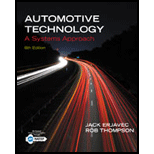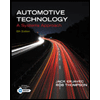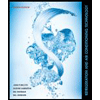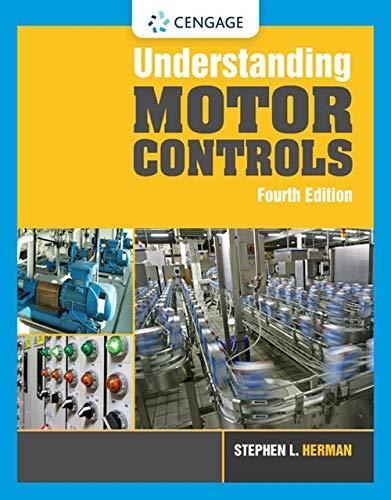
Automotive Technology: A Systems Approach (MindTap Course List)
6th Edition
ISBN: 9781133612315
Author: Jack Erjavec, Rob Thompson
Publisher: Cengage Learning
expand_more
expand_more
format_list_bulleted
Concept explainers
Textbook Question
Chapter 31, Problem 2RQ
What is indicated by a LTFT reading of 24 percent?
Expert Solution & Answer
Trending nowThis is a popular solution!

Students have asked these similar questions
BADLY NEED ASAP
Explain the above : pressure sensor, pressure gauge and pressure transmitter with an application
Chapter 31 Solutions
Automotive Technology: A Systems Approach (MindTap Course List)
Ch. 31 - List four service precautions for working on the...Ch. 31 - What is indicated by a LTFT reading of 24 percent?Ch. 31 - What is the correct procedure for checking an...Ch. 31 - What is the difference between STFT and LTFT?Ch. 31 - The PCM checks for a closed throttle plate each...Ch. 31 - Which of the following is a likely cause of a lean...Ch. 31 - What problem may result from dirt buildup on an...Ch. 31 - Which of the following would not cause a...Ch. 31 - What is the correct way to test an injector with...Ch. 31 - What is the difference between the pulse width and...
Ch. 31 - How can you use a dual trace scope to make sure...Ch. 31 - What are three possible problems that can allow...Ch. 31 - What is the purpose of having two accelerator...Ch. 31 - What is indicated by a negative LTFT value?Ch. 31 - True or False? The signals from an air-fuel ratio...Ch. 31 - While discussing the causes of...Ch. 31 - While discussing IAC valve diagnosis: Technician A...Ch. 31 - While discussing IAC motor removal, service, and...Ch. 31 - While discussing injector testing: Technician A...Ch. 31 - While discussing airflow sensors: Technician A...Ch. 31 - While discussing scan tool diagnosis of fuel...Ch. 31 - While discussing a high idle speed problem:...Ch. 31 - While discussing the causes of a rich air-fuel...Ch. 31 - While diagnosing an idle speed problem: Technician...Ch. 31 - While looking at fuel trim values: Technician A...
Knowledge Booster
Learn more about
Need a deep-dive on the concept behind this application? Look no further. Learn more about this topic, mechanical-engineering and related others by exploring similar questions and additional content below.Similar questions
- Explain what is meant by a maximum operating pressure (MOP) TXV.arrow_forwardWhat is the advantage of using large gauge lines for evacuation?arrow_forwardWhile discussing the AWG system: Technician A says that most automotive wiring range from 0 to 4 gauge. Technician B says that the higher the gauge number, the larger the diameter of the wire. Who is correct? Technician A Technician B Both A and B Neither A nor Barrow_forward
arrow_back_ios
arrow_forward_ios
Recommended textbooks for you
 Automotive Technology: A Systems Approach (MindTa...Mechanical EngineeringISBN:9781133612315Author:Jack Erjavec, Rob ThompsonPublisher:Cengage Learning
Automotive Technology: A Systems Approach (MindTa...Mechanical EngineeringISBN:9781133612315Author:Jack Erjavec, Rob ThompsonPublisher:Cengage Learning Refrigeration and Air Conditioning Technology (Mi...Mechanical EngineeringISBN:9781305578296Author:John Tomczyk, Eugene Silberstein, Bill Whitman, Bill JohnsonPublisher:Cengage Learning
Refrigeration and Air Conditioning Technology (Mi...Mechanical EngineeringISBN:9781305578296Author:John Tomczyk, Eugene Silberstein, Bill Whitman, Bill JohnsonPublisher:Cengage Learning Understanding Motor ControlsMechanical EngineeringISBN:9781337798686Author:Stephen L. HermanPublisher:Delmar Cengage Learning
Understanding Motor ControlsMechanical EngineeringISBN:9781337798686Author:Stephen L. HermanPublisher:Delmar Cengage Learning

Automotive Technology: A Systems Approach (MindTa...
Mechanical Engineering
ISBN:9781133612315
Author:Jack Erjavec, Rob Thompson
Publisher:Cengage Learning

Refrigeration and Air Conditioning Technology (Mi...
Mechanical Engineering
ISBN:9781305578296
Author:John Tomczyk, Eugene Silberstein, Bill Whitman, Bill Johnson
Publisher:Cengage Learning

Understanding Motor Controls
Mechanical Engineering
ISBN:9781337798686
Author:Stephen L. Herman
Publisher:Delmar Cengage Learning
Material Properties 101; Author: Real Engineering;https://www.youtube.com/watch?v=BHZALtqAjeM;License: Standard YouTube License, CC-BY